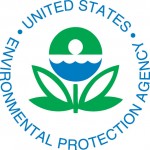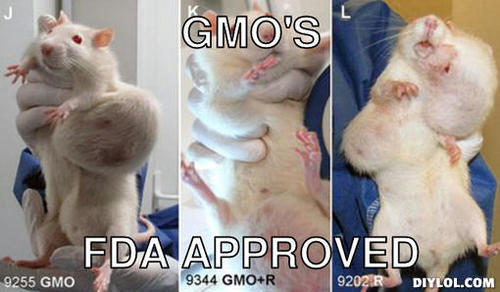In the spring of 2012, the results of a long-term study on one of the most overlooked problems in the human experience was released. Born Too Soon: The Global Action Report on Preterm Birth, jointly sponsored by The March of Dimes Foundation, The Partnership for Maternal, Newborn & Child Health, Save the Children and The World Health Organization revealed an annotated selection of possible causes as well as detailed plan for actions intended to reduce premature birth and death. It also presented a dismal report card of the childbearing management and outcomes of the world’s countries; the United States ranked shamefully at 131st in preterm births.
The United States’ ranking is particularly shocking in that the primary causes of premature birth and death have supposedly been ameliorated. Since the 1990’s, lung maturity has been addressed through use of steroid injections at the first signs of labor. Nutrition has been addressed since the 1980’s through increased maternal resources (Women, Infants and Children or WIC ). Issues of ill-health, notably under/overweight, diabetes, high blood pressure, smoking, infection, age, genetics, multiple pregnancy and closely spaced pregnancy are supposedly mitigated through our mind-boggling 35% average, surgical intervention rate.
The US is unique in that its obstetrical practices include a substantial number of pregnancies are introduced by in vitro fertilization (IVF) and artificial insemination (AI) (increasingly performed in other countries, with birth occurring within the US borders). Additionally, first time moms in the US are often older and cesarean sections, either elective or for perceived complications, add to the increasing rate of prematurity in the US. These facts are presumed to explain the dismal state of maternal health and rise of premature births seen over the last decades in the US. Using these circumstances to disregard a troubling trend, however, negates the fact that this same population where premature birth is increasing, represents some of the best fed and medically attended women in the world. And yet, our premature birth rate continues to increase, along with births in which unusual defects of placenta, cord and newborn become more prominent. Why is this?
Reproductive technology and other variables not-withstanding, the largest and most rapidly developing body of evidence suggests that being born too soon is just one of the consequences of long term chemical exposures from foods, medicines and environmental contaminants. Endocrine disrupting chemicals, whether by pharmaceutical or environmental exposure, elicit subtle but recognizable damage to broad swaths of mammalian cells; damage that is complex and chronic, likely spanning multiple generations. It is damage that we are only beginning to understand.
The Power of Small, Frequent Exposures to Endocrine Disruptors
February 19, 2013 – just 9 months after Born Too Soon was published, the massive 296 page, multi-continent report on the probable effects of endocrine disrupting chemicals (EDCs) was published in joint by the World Health Organization and The United Nations Environment Programme. Though it hardly made a whimper in the common press, State of the Science of Endocrine Disrupting Chemical-2012 is a shocking narrative into the damage being done to all mammalian cells, especially and most importantly by small, frequent exposures.
In the earlier 2002 version of this report, the Global Assessment of the State-of-the-Science of Endocrine Disruptors concluded that “there is weak evidence that human health has been adversely affected by exposure to endocrine-active chemicals.” Under then-current testing, toxicity was most frequently measured by highest tolerable dose. Despite early works such as Silent Spring, it was not until anecdotal insight gained through the popular book Our Stolen Future: Are We Threatening Our Fertility, Intelligence and Survival? that science began to wonder if it was asking the right questions. While it is clear that massive doses of any chemical has a level at which cellular death is inevitable, is it possible that the living cell is more impacted by low, consistent doses?
With the release of the updated State of the Science the evidence is clear and the answer is yes; human health is indeed being adversely affected by exposure to endocrine-active chemicals at remarkably low and varied levels. Further, it is clear that we have been accumulating both exposure and cellular change for many years, certainly at least as long as the earliest pesticides and hormones at the turn of the century. Although scientists cannot agree on specifics about identification of and protection from endocrine disrupting chemicals, the global scientific chatter indicates that the State of Science is an urgent warning that most endocrinologists are taking very seriously. We are changing cellular behavior from the mitochondria (the cells furnace) outward and the consequences are profound and growing (here) and (here).
So substantive is the insight contained within State of the Science that ACOG followed in October 2013 with its own 17-page report, Exposure to Toxic Environmental Agents, reiterating the dangers of, and potential consequences to, exposure to toxic chemicals and EDCs, including risk of infertility, miscarriage, prematurity, deformity and stillbirth. Deeming reducing pregnant women’s exposure through education “critical”, the American College of Obstetricians and Gynecologists surveyed 2500 physicians over the following months and found that fewer than one in five ask patients about toxic exposure.
Citing lack of understanding of the issues and concerns over stressing pregnant women, doctors feel that they need to focus their time on other aspects of care, but these are precisely the issues that must be addressed if maternal and fetal health are to be protected. If doctors are not willing to protect maternal health, then others must step up. I would argue that midwives must fill that role. The first step is in understanding the role of endocrine disruptors in maternal fetal health.
Endocrine Disruptors and Preterm Birth
Consider the impact endocrine disrupting substances can have on reproduction and their potential relationship to prematurity. Women are born with all the eggs they will ever have, and thus, are particularly sensitive to any assault on individual cells. We understand this from dentistry where shields are required to prevent the cumulative damage of x-rays. In contrast, we have such difficulty considering that the minute doses of any endocrine disrupting chemicals or particles might change the course of human potential; but they can and do. Here are just a few examples of endocrine disruptors affecting maternal and fetal health.
Obesogens, Chronic Disease and Prematurity
Obesogens are compounds that can alter the lipid (fat) development and metabolic balance. They are present in plastic containers including bags, BPA, air fresheners, non-stick pans, pre-packaged foods, fructose, monosodium glutamate, nicotine, DES, Estradiol, pesticides, lead. They are found in plastic and melamine dishes and cups along with urea-formaldehyde resin.
Obesogens have a very specific relationship to fat, a relationship that has grown steadily and significantly over the past 50 years. The primary mechanism appears to be the transmutation of cortisone into the active hormone cortisol in the fatty tissues. Repeated trials indicated that it promotes adipgenesis; an energy component that processes substance into triglycerol, insulin, epinephrine, glucagon and ACTH in the body. They are time sensitive: The longer a challenge is presented (exposure) the greater the impact; the greater the artificial exposure (such as chemical and EDC), the more complex the reaction at the cellular level.
They have been found in every fat cell in the body and their presence can have very far reaching consequences in the childbearing cycle. These compounds appear to create a profound deficiency in normal ratio of sex hormones, alter lipid regulation and derange glucose metabolism. Alone or combined these changes can have a profound relationship on maternal and fetal outcomes. Some have speculated a “probable link” between these endocrine disruptor initiated changes to pregnancy-induced hypertension.
There is evidence that exposure to obesogens can be epigenetic and heritable modifications to DNA, meaning that unchecked and uncontrolled continued exposure to obesogens may permanently alter our lipid and glycogenic biology progressively, and across current and future generations.
Flame Retardants and Preterm Birth
Polybrominated diphenyl ethers (PBDEs) are compounds that are uniquely disruptive to the neurological system through changes in the receptors. Their primary use is as flame retardants and have been used in building materials, electronics, household furnishings, motor vehicles, airplanes, plastics, polyurethane foam and textiles –including children’s sleepwear since the early 1970’s. PBDEs are dangerous in all forms but particularly insidious in one of their most readily found forms, dust, as they are taken up through both breath and skin absorption and moved throughout the body. PBDEs have a profound effect on childbearing.
- PBDE reduces fertility at levels found in almost every household.
- PBDEs are indirectly associated with premature birth, low birth weight and stillbirth through first and second generation endocrine interruption.
- As little as a single dose has shown to impair neurodevelopment in the preborn and delayed development in young children including Autism spectrum disorders.
- PBDEs disrupt hormone levels in the thyroid gland of both mother and fetus.
- PBDEs evoke epigenetic dysregulation.
The EPA action plains have called for the removal PBDEs from our environment for years. Despite this, detectible levels remain high within the adult population; higher still in very young children.
Glyphosate Based Herbicides: A Danger to Maternal Fetal Health
Glyphosate is a glycine based broad spectrum kill-all herbicide which is, in large part, designed to work specifically with genetically modified organism which are tolerant of it. Early and most on-going testing of this herbicide has tested the active ingredient in isolation. Very recent testing has shown the “inert” ingredients (adjuvants) to be aggressively toxic, one ingredient of which is extremely cytotoxic.
Unlike many of the other individual endocrine disrupting chemicals reviewed in State of the Science, the glyphosate substance has been slippery to fix within research. Many of the best research papers have been either dismissed out of hand or withdrawn from publication (a behavior which is rare indeed). The financial power of the major glyphosate producer (Monsanto) is well-connected in every government and research organization.
Of the studies that have been reasonably accepted and reviewed, glyphosate/adjuvant substances have been shown to be endocrine disruptors and further studies may confirm current research indicating the greatest danger in pregnancy to be:
- They are capable of vertebrate cranial faults during early gestation
- They have exhibited cytotoxic (cell killing) capacity in human cells at levels less than half the agricultural use
- Because of pure glyphosate’s ability to amplify the estrogenic effect of soy, gmo soy has shown to induce human breast cancer growth
- In 2013, the first solid evidence as to glyphosate’s impact on gut microbiome was released. Described as the “textbook example of exogenous semiotic entropy” it is shown to reduce or destroy tryptophan, tyrosine, phenylalanine, methionine, serotonin, Alzheimer’s, Parkinson’s, autoimmune diseases.
- Also in 2013, Interdisciplinary Toxicology released research documentation that glyphosate is “pathway to modern diseases: celica sprue and gluten intolerance”.
Today’s report of permanent kidney damage in the farm workers of South America seems to confirm that glyphosate is not just an endocrine disrupting chemical with epigenetic and mutagenic properties. As weeds become progressively resistant to glyphosate, it would seem that the increasingly high concentrations and applications of this chemical are linked to evidence of carcinogenic damage on a large scale.
For midwifery and birth the single most remarkable statement about glyphosate’s impact in childbearing is the knowledge that glyphosate disrupts enzyme function the “cytochrome P450” enzymes regulate Vitamin D, cholesterol, sex hormones and stabilizes blood fibrinogen continuity, all important factors in healthy pregnancy. Glyphosate also causes cellular damage to the placenta, the one organ of regeneration everyone should care greatly about (here), (here),(here),(here).
The Precautionary Principle and Premature Birth
At the heart of the Born Too Soon report we are lead through the maze of what may be causing prematurity and then in State of the Science we are given an opportunity to reflect upon the cellular challenge of history; and quite possibly the single most important disturbances in our biological evolution. This is a critical moment in childbearing and one that we would do well to spend time in mindful consideration. If the research is even marginally accurate is there anything more important than understanding and putting a halt to the barrage of assaults to our mitochondria and cellular health?
Part of the global answer to this conundrum has been in place since 2005: The Precautionary Principle; “a strategy to cope with possible risks where scientific understanding is yet incomplete, such as the risks of nano technology, genetically modified organisms and systemic insecticides.” This UNESCO environmental mandate was ratified in 2005 and is part of the fundamental inquiry system outside the US. Something of a “prove its safe before you put it out there” perspective, the Precautionary Principle works antithetically to the American system of testing and releasing.
“The precautionary principle enables rapid response in the face of a possible danger to human, animal or plant health, or to protect the environment. In particular, where scientific data do not permit a complete evaluation of the risk, recourse to this principle may, for example, be used to stop distribution or order withdrawal from the market of products likely to be hazardous.”
Our work in the United States is complicated on a national level certainly as we are hindered by far too much by the politics of lobbies, big Agri-Business and Biotech companies. Evidence-based medical decision-making has been extremely slow in taking a position entirely because of the scientific corner it has boxed itself into. What then?
Born Too Soon and Midwifery: An Opportunity
Each individual world community is dealing with childbearing issues in unique ways; prematurity, birth defects and low birth weight have causal relationships that may look quite different from country to country, and yet, we are united in the truth that hunger, poverty, insufficient water, shelter and healthcare are an increasing problem worldwide. The addition of the biochemical challenges of endocrine disrupting chemicals has turned childbearing toward a future none wants to see continue. Regardless of the promises made for more and better food through chemicals and genetic manipulation, we are watching a game-changing shift in human DNA through mitochondrial damage that is leading to more, not less, disease, disorder and childbearing loss.
Women and children are very much the canary in the coalmine of endocrinology. If the choices we are making as a species so alter our potential for stable regeneration, we are ethically bound to not only study them without equivocation, but to soundly rebuke their presence in our world until their safety is assured. Women are being labeled high-risk for high-blood pressure, obesity, thyroid imbalance, diabetes and reproductive challenges as consequences of the mitochondrial damage being inflicted by an indifferent industrial machine contaminating the environment with dangerous endocrine disrupting chemicals.
As midwives we are bound to stand beside women experiencing those challenges. We have never been simply about birth. Midwifery has always been Matrifocal by definition; through our focus on the welfare of women and the communities we have stood beside in every issue. It is time for us to remember that with or without scientific validation we are bound also by our role as teachers. We are called to educate toward sustainable behaviors, involve ourselves in community changes and focus our practices on least invasive technology, as we search for answers to the growing list of health problems within the community we serve.
Live without hesitation. Dwell not on outcome or reward. Act with full attention.
Midwives have been the guardians of the sacred in community and birth since the beginning of time. We have dared to speak the truth when none wanted to hear it; when the cost might have been our very lives. Despite the occasional feeling of loneliness, we have really never been alone in that journey and we are even less so today. There is a growing body of health practitioners asking the same questions, risking their reputations and often their livelihood in an effort to bring to light the path through the madness that is the current recklessness of science. Find resources within your area. Encourage and support their work. Comb the internet for research about hormone and endocrine disorders. There are many online researchers that are asking good questions; endocrine research is becoming more approachable with websites like Hormones Matter. Women’s mental health is leaving the dark ages of toxic medications with a new breed of psychiatrists like Kelly Brogan, MD, providing the insight to make the shift.
There is a revolution brewing – in birth and in health – become part of it.







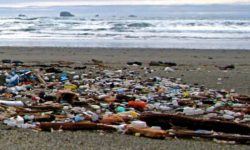
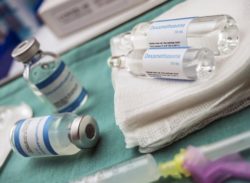


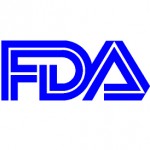
 m sure in cases like this, the marketing department is full of clever titles like tomatut or peanato. Currently,
m sure in cases like this, the marketing department is full of clever titles like tomatut or peanato. Currently, 